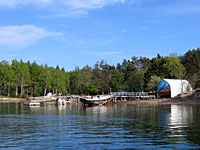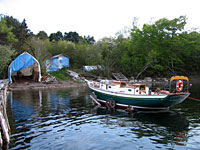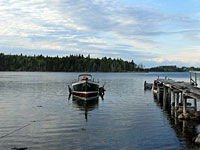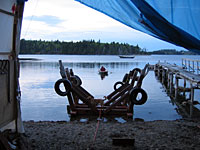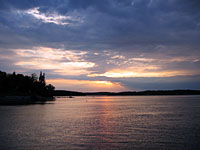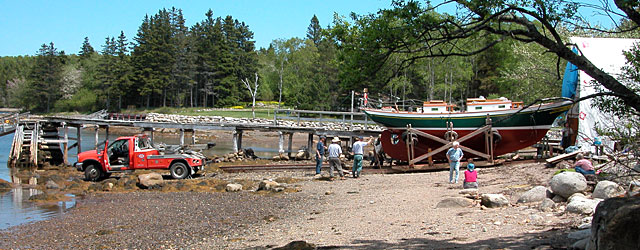
Launching
The schooner "Concertina" spends the winter in a covered shelter just above the tide line on a beach at Heckmans Island. Every spring she gets launched and every fall she gets hauled at this home port site.
The schooner is registered at 6 tons net. She is 29 feet long and draws 4 feet 8 inches, which is just about the limit that can be floated on the roughly six foot spring tides in these waters.
Launching Day 2008: June 3 (new moon). The boat is moved to the beach at low tide, and if all goes well, the tide meets expectations and floats the vessel free of the cradle - all on the same tide.
As you will see, the whole operation goes like a well-greased machine.
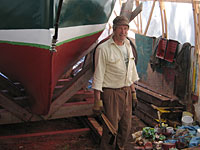
Well before low tide, boat and skipper both in a state of readiness.
Except for removing a bit of tape and later, touching up the bottom paint ...
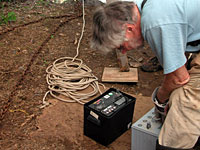
... and getting the batteries aboard.

Schooner in shelter with end framework removed.
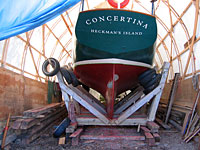
"Concertina" in her cradle with launching 6x6 rails stacked along her port side.
The cradle is sitting on a set of rails with spacers in place. The spacers keep the rails apart and under the cradle. The skids on the cradle keep the rails from spreading. At this point, the cradle is wedged so that it will not move.

Friends and neighbours arrive and the day's work gets underway.
The first rail has been placed on the beach.
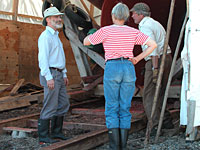
Discussion in progress between John Zuck, Lainie and Ed Porter.
Two rails and the spacers are in place.
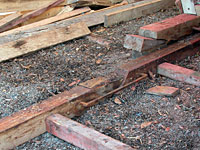
The rails under the cradle were placed when the boat was hauled. The rails point in the other direction for launching, so a wedge is needed to reverse direction. The dog holds the joint together, and the spacers hold the rails apart. The wedge holding the cradle in place is also visible .
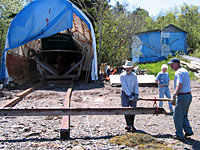
John and Bill man-handling a 22 foot rail ...

... while Ed and David carry the other end.
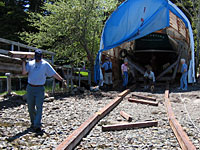
Bill carrying 4x4 rail spacers.
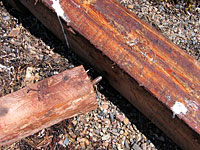
The spacers are pinned in place.

Bill and Haigh hammering in a dog, connecting two rails.
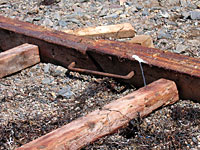
Two rails held in place with an iron dog.

Haigh expertly laying down the grease with a shingle.
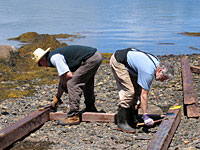
David and Bob applying chassis grease to the rails.
The next set of rails are not in place because the tow truck will soon occupy that space.
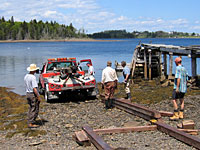

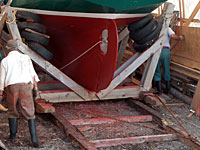


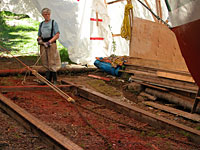
Concertina is just leaving the rails she sat on all winter.

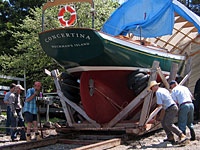
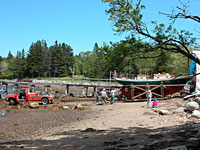
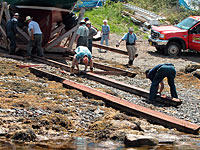
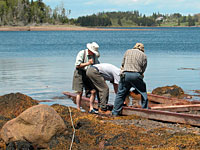


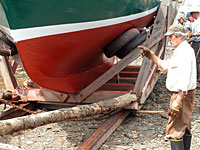
The pushing logs have been pinned to the cradle. The chain is now attached to the truck in place of the check line.
The push has begun, but it must pause when the cradle is on the next set of rails.


The cradle is almost off of the next set of rails.
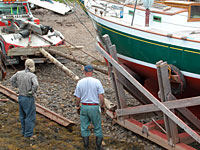
Another set of rails has been removed, and the next push begins.
Bill and Ron observing the truck and pushing pole arrangement. The poles are pegged into the cradle runners and the chain is in place as a check line.
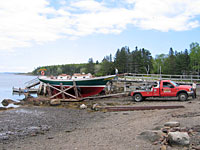
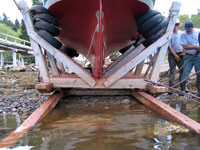
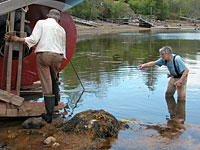
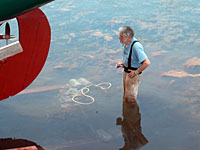
Ever vigilant.
The lead pigs holding the rails down are clearly visible, as is the line used to hold the rails together, until the cradle arrives.
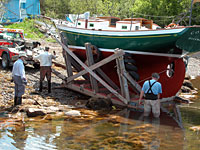
"About this much more... "
Directing the final tow truck push with John, Ed and David in attendance.
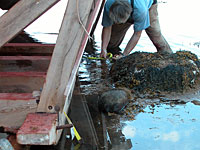
David placing a strap on the after end of the cradle.

The forward end of the cradle strapped down to anchor rods.
The idea is to hold the cradle to the bottom so that the vessel can float free on the high tide.
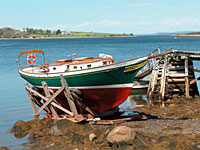
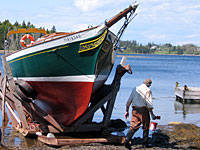
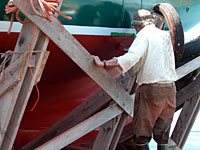
Such as removing the fenders and putting on the last bit of bottom paint.
And running a line from the cradle to shore to secure it against being carried away on the tide (just in case the straps and and anchor rods do not hold).
And putting all of the rails back in the shed.

